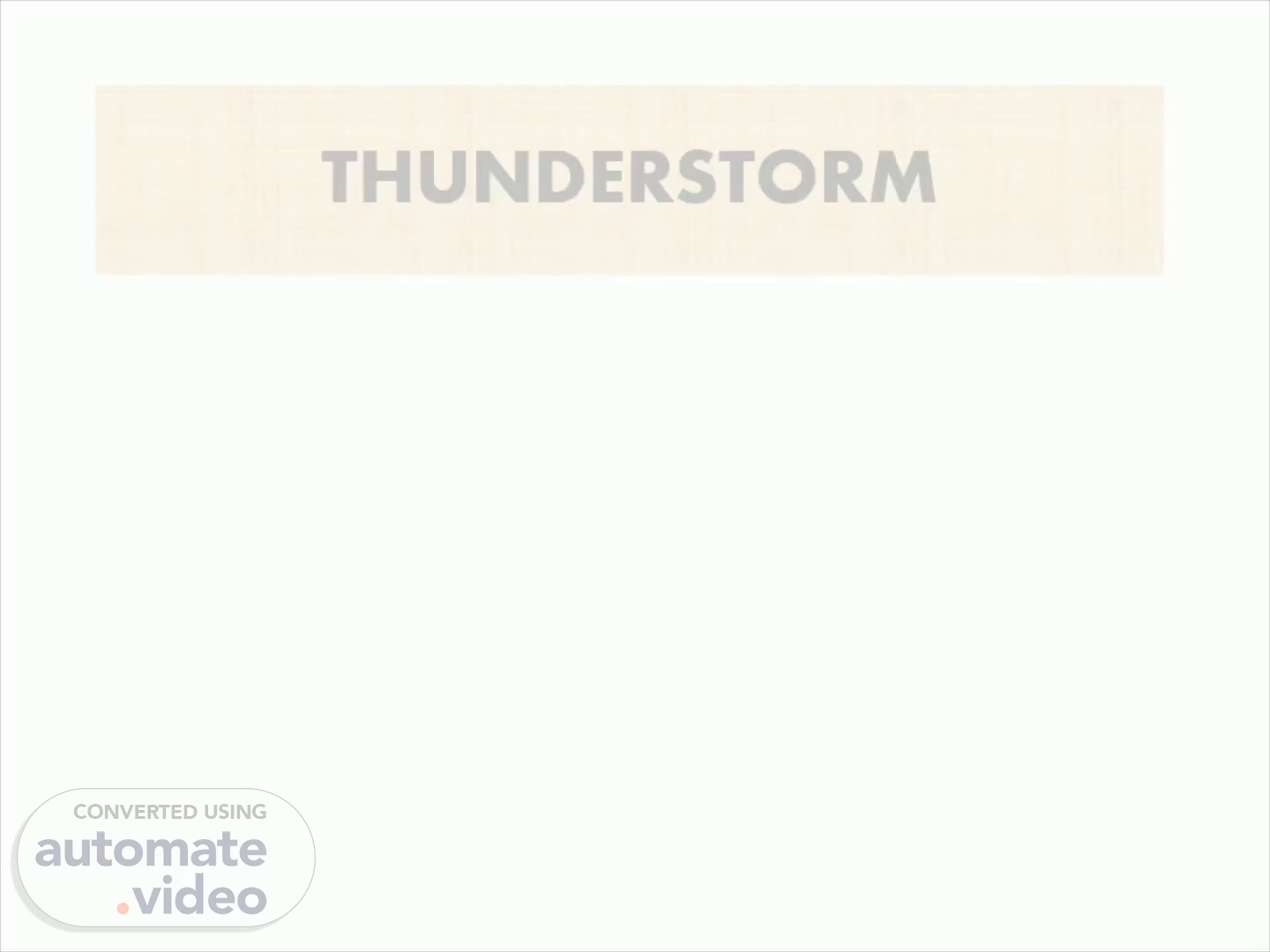Scene 1 (0s)
[Audio] Good morning everyone. Today we are going to discuss a very important topic, severe weather! Specifically, we will be discussing thunderstorms, their characteristics and potential impacts. Let's get started!.
Scene 2 (16s)
[Audio] Thunderstorms and tornadoes are among the most effective and destructive forces of nature. These storms often bring heavy downpours, lightning and hail, and tornadoes can create devastating effects on communities. It is believed that annually, there are more than 14 million thunderstorms, with 40000 occurring daily. An average of 1,200 tornadoes are reported in the US each year, with winds reaching up to 110 mph and speeds of 28 miles per hour. Tragically, these extreme weather conditions can lead to considerable damage, casualties and destruction of property..
Scene 3 (56s)
[Audio] Thunderstorms are a frequent occurrence in the global weather system. Approximately 14 million thunderstorms occur every year, with around 40000 a day. The majority of these are usually not destructive, yet some can be immensely powerful and bring about considerable harm. Hurricanes are among the sorts of tropical storms which occur in the Atlantic Ocean. Winds from a hurricane can reach a minimum of 119 kilometers per hour, and in some cases can have wind speeds as fast as 252 kilometers per hour. Areas near the coast are susceptible to the damaging effects associated with the storm, such as powerful winds, heavy rain, and storm surges..
Scene 4 (1m 41s)
[Audio] Blizzards are a type of winter storm that are characterized by strong winds, low visibility, and heavy snowfall. They can be dangerous and cause extensive disruption as visibility is drastically reduced and large quantities of snow can cover roads and buildings. Blizzards are more frequent in cold climates such as the Arctic, Siberia, and the North American Great Plains compared to other areas of the world, although they can occur in any cold region. Although thunderstorms are common, blizzards are much less frequent but can be powerful weather events..
Scene 5 (2m 16s)
[Audio] Dust storms differ from thunderstorms in that they are typically composed of an array of different particles that are swept up and transported by strong winds. These particles could range from pollen, bacteria, smoke, ash, salt crystals, and even dirt and rocks such as sand. Dust storms may even contain minuscule pieces of human and animal skin cells, pollutants, and hair. It is truly remarkable how these forceful winds can pick up and move such fine materials..
Scene 6 (2m 48s)
[Audio] Estimates suggest there are approximately 14 million thunderstorms annually, or approximately 40000 each day worldwide. The majority may not cause significant disruption, however, thunderstorms can at times be severe and destructive. Flooding is another type of extreme weather, which is triggered by heavy rain over a short period, leading to substantial damage to property and communities..
Scene 7 (3m 14s)
[Audio] Hail is a form of severe weather, made up of supercooled water that has been refrozen in the atmosphere before falling back to the ground in the form of large ice balls. This can result in significant harm to life and property, as demonstrated by the minivan windshield in the image. Now let's take a closer look at hail..
Scene 8 (3m 35s)
HAIL. Hail is supercooled water, which is refrozen in the atmosphere, before falling back to the ground as a sizable ice ball. Hail can cause severe damage to life and property, like this minivan windshield..
Scene 9 (3m 40s)
ICE STORM. Nathan Atkinson Geography 1000. * An Ice Storm, or freezing rain, is rain that freezes on contact with a cold surface or with cold air that is near the..
